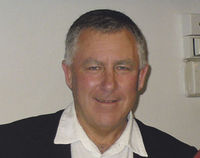Lyon, France, is a Roman city built on the confluence of two rivers. There is also the medieval city, and now the modern European and international city.
 The confluence is a key symbol of our pilgrimage here to Lyon to celebrate the bicentenary of the birth of Bishop Philippe Viard, SM, founding bishop of the diocese of Wellington in 1848.
The confluence is a key symbol of our pilgrimage here to Lyon to celebrate the bicentenary of the birth of Bishop Philippe Viard, SM, founding bishop of the diocese of Wellington in 1848.
A meeting of two peoples, of two churches—Lyon and Wellington—from either ends of the earth. We have come at the invitation of the Archbishop of Lyon, Cardinal Barbarin, who wanted to celebrate the bicentenary alongside the Week of Prayer for Christian Unity (in January in the northern hemisphere) and the Year of Saint Paul. The main celebration was held on Sunday January 25, the feast of the Conversion of Saint Paul .
The life and mission of Bishop Viard reflects the missionary dynamism of Lyon, in particular the Parish of Saint Nizier, in the heart of the city. It is the parish associated with Bishop Pompallier, Suzanne Aubert, Pauline Jaricot, Frederic Ozanam and Marie-Francoise Perroton, the first Catholic woman missionary to the Pacific in 1845. The Cenacle Sisters and the Sisters of Jesus and Mary (formerly in Wainuiomata) also have links with Lyon through their founders.
So we have had an amazing pilgrimage to the places of origin of the Society of Mary and the wider Marist family who played such a key role in the first evangelisation of New Zealand and the establishment of the Diocese of Wellington. The formal celebrations of the bicentenary including a civic reception took place in the Cathedral of St John. There has also been a joyful reunion with some of the World Youth Day pilgrims who came to Wellington last July. Coming here in the midst of winter has not hindered our pilgrimage in any way. The warmth of the hospitality we have received made sure of that.
It has been for me an occasion to reflect on what Bishop Philippe Viard may like to say to his successor. I have appreciated anew his missionary dynamism and pastoral care. He was willing to set out from his earlier missionary appointment in the Bay of Islands to head south and start over again. He reminded me of St Paul, and the many journeys he made to the churches of Asia Minor. As we reflected on the Conversion of St Paul I thought of his words and could see Bishop Viard living them out—in 1848, Bishop Viard’s diocese included the whole of the South Island—‘Proclaim the message and, welcome or unwelcome, insist on it…do all with patience…make the preaching of the good news your life’s work, in thoroughgoing service’ (2 Tim 4: 1-5). My prayer for everyone of us in the Archdiocese of Wellington in 2009 is that we too will ‘Make the preaching of the good news our life’s work, in thoroughgoing service’.
Bishop Viard valued collaborative ministry, albeit in the manner of his 19th century understanding of church. Travelling with him to Wellington was Beata Hoki of the Bay of Islands, the first woman religious of the New Zealand church and companion of Suzanne Aubert. Beata helped him with his understanding of M%u0101ori language and custom and her name appears regularly in baptismal registers, alongside those she helped prepare for baptism.
Bishop Viard worked for the unity of the church at a time when there was deep tension within the newly established Catholic church in New Zealand, following the departure of Bishop Pompallier for France and the creation of a second diocese in New Zealand.
This trip to Lyon has been one of great blessings for us. As we remember our first bishop this year and as we continue to reflect on the great apostle Paul, we could well pray again the synod prayer of 2006, knowing that Paul the Apostle and Philippe Viard pray that with us.